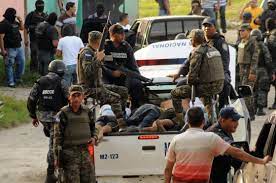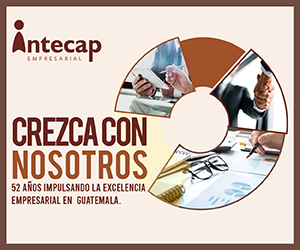It is best to get permission from local gang leaders before entering a small neighborhood that locals call La Playita in Chamelecón, Honduras. Violence here is as pervasive as the poverty in this area, and strangers aren’t generally welcome.
But these days, access is a bit easier to come by, especially if you happen to be a news outlet that wants to talk about the incredible destruction that still plagues this neighborhood.
Twin Category 4 hurricanes made landfall in Central America within two weeks of each other in late 2020, decimating huge portions of Nicaragua, Guatemala, and Honduras.
In La Playita, or Little Beach — so-named because the community lies on the banks of the Chamelecón River — hurricane rainfall caused the river to surge more than 20 feet, pushing torrents of water up and over dirt levies. Hundreds of residents scrambled to safety with nothing more than the clothes on their backs, many seeking shelter underneath nearby bridges.
When the waters receded, colossal amounts of heavy mud remained, submerging entire structures in silt. There were no homes to return to.
“The truth is that many people were forced to flee from here,” said Father Saul Arrieta, a well-known local priest in the neighborhood. “Many went north, many young people went to the US. It hurts my heart to see all this.”
Central Americans migrating north, even in large numbers, is not a new phenomenon. But the hurricanes coupled with a deadly pandemic combined to create an unprecedented situation where, for many, migration is not only about simply seeking better lives — it is a matter of survival.
It has also created unique challenges for the Biden administration and its immigration point person, Vice President Kamala Harris. Harris was in Central America this week, tasked with helping the US figure out how to shrink the record numbers of migrants arriving at the southern border.
The storms
Visiting with the Arias Sánchez family is more difficult than it used to be, considering they now live on top of a 10-foot-tall pile of dried mud. They direct guests to use the half dozen steps they carved out from the mud to make it easier.
When the water rushed in last November, the family of nine, two grandmothers, sons, daughters, babies, had to flee to a local shelter. When they came back, they found their family home had been completely subsumed by mud.
With nowhere else to go, they gathered what random materials they could — some tarps, old doors, corrugated metal sections of fallen roofs — climbed on top of the hardened mud and built the one-room makeshift structure that all nine of them now share.
“Everyone sleeps together on the dirt floor here at night,” said Juana Fransisca Sánchez, the matriarch of the family. “We’ve lost absolutely everything.”
The family says they’ve lasted here as long as they can but without government support soon, there will be only one option.
“We would leave,” said her son Joel Raul Arias Sánchez, 26, with a one-year-old daughter. “There are no jobs, there is nothing here. There is no future. Many neighbors are already in the US and many are planning on leaving soon.”
In an interview with CNN, a top government official acknowledged that many parts of the country have yet to receive the level of assistance necessary.
“It’s not possible that everything is instant,” said Hector Leonel Ayala, the Honduran Minister of Government. “We are not a powerhouse. We are a developing country with challenges.”
He stressed the government had done a lot of work already, however, including the clearing of at least a million cubic meters of mud, building new homes and levies and providing loans to certain affected industries.
Critics, including ordinary citizens that spoke to CNN and non-governmental organizations, have argued the government has not done nearly enough to help its population rebuild and say the proof is in how many people have left.
Entire sections of the neighborhood where Arias Sánchez lives are empty. Some houses are still filled top to bottom with mud, tall weeds growing skyward where ceilings used to be.
“Many people haven’t come back since the storms,” said Arias Sánchez, adding most went to the US.
A short drive away, a mattress half-buried in mud acts as a doormat of sorts to the small lot Osban Obdulio Cruz Henrique shares with his family of a half-dozen people. His “house” is in worse shape than the Arias Sánchez’s. Two walls are made of tarps and bedsheets, the other two a patchwork of old doors and thin plywood.
“Every time it rains the water leaks through the tarp overhead, and it runs underneath our feet,” said Cruz Henrique, showing the gap between the walls and the ground. Three mattresses lay directly on a mud floor, permanently half-soaked with rainwater that won’t dry out.
“We are desperate,” he told CNN. “We don’t know how to start from zero if we have no chance at making an income. There is no other choice but to leave.”
The total number of people displaced by the storm is difficult to assess, and the government told CNN it does not have such figures. But various think tanks and the UN Refugee Agency have put the number well into the hundreds of thousands, if not millions. It is a staggering percentage given the country’s total population is less than 10 million people.
In two dozen interviews, CNN heard story after story that mirrored each other. Before the hurricanes, many were barely hanging on. After the hurricanes, they had nothing left.
The Pandemic
Seven months before the hurricanes hit, another storm arrived in Central America. While the Covid-19 pandemic spared no country its biological wrath, perhaps no region has been hit harder economically than Latin America.
Nation after nation hunkered down, closing borders and shuttering businesses. Economies in the region generally weren’t faring well before the pandemic—once it hit, many simply cratered.
Honduras was no different. In 2019, nearly 15 percent of the population lived on less than $1.90 per day, a figure that has likely increased World Bank data shows.
When the coronavirus arrived, government-imposed lockdowns and strict restrictions combined with migration outflows and the devastating storms contributed to a 9 percent drop in the country’s 2020 GDP, according to the World Bank. More than 50 percent of the population now lives below the poverty line.
Honduran think tank FOSDEH, short for Social Forum on the External Debt and Development of Honduras, says more than a half-million people lost their jobs in 2020. Given the informal nature of so many jobs in the economy here, a true figure is impossible to come by. Still, that level of job loss would represent more than 12 percent of the labor force, according to World Bank statistics.
More than 15 months after the pandemic began, lost jobs are not rematerializing in Honduras in earnest, an enormous factor in the decision some are making to leave. “It feels terrible because we’re going to leave my mother, but we have no future here,” said 17-year-old Gerardo Alexis Perez Argueta.
He and his twin brother Celin Adolfo said they are planning to leave and head north to the United States in roughly two weeks. They showed off the new sneakers they plan to wear as they make the nearly 1,500-mile trek on foot. Each pair cost $35, an enormous sum of money for a family that survives on only a few dollars per day.
“What can you do,” asks their mother Griselda Argueta Argueta through tears. “It hurts that your children leave. You don’t know if they will return or not, but there’s no other option for them here.”
The brothers don’t want to leave Honduras, but with nothing higher than a sixth-grade education and an economy in tatters, the decision, they argue, was essentially made for them.
“If they had more opportunities people wouldn’t have to leave this country,” said Arrietta, the local priest.
Addressing the root causes
The storms and the pandemic combined to exacerbate long term trends in the region forcing people to migrate—corruption, food insecurity, and a lack of economic opportunity. Though homicide rates throughout Central America generally ticked down in 2020, it remains among the deadliest regions in the world and violence remains a migration driver, according to Human Rights Watch.
None of these issues are new but they stand to worsen without a significant turnaround. And that is where the Biden administration wants to make its mark.
Vice President Kamala Harris has taken the lead in spearheading the US push to fundamentally help address some of those concerns. The Biden administration has earmarked some $310 million in near-term humanitarian aid as a part of a longer-term plan to invest some $4 billion dollars in the region.
But this is not the first US administration to try and stem migration by throwing money at the problem, often funneling the funds through agencies like USAID. Fixing the systemic issues driving people to flee can’t simply be solved by budget allocations alone.
“[Harris] has a very, very tough job ahead of her,” said Cynthia Arnson, Director of the Wilson Center’s Latin America Program. “It’s not impossible, there is a lot that can be done, but achieving the generational change that the administration hopes to produce will be extraordinarily difficult to achieve.”
Start with the fact that Central American governments are extensively corrupt. Transparency International ranks countries’ levels of corruption on a 0-100 scale. El Salvador was the high achiever of the bunch with a score of 36, good enough for 104th place worldwide. The rest fared worse.
Put another way, the US cannot rely on good government partners in the region to help make sure that aid money does what it is supposed to do. The risk of government officials simply lining their own pockets is high.
The Biden administration knows that and has signaled it wants to work with the private sector and non-governmental groups on the ground to ensure help reaches where it needs to and makes living conditions better for ordinary citizens throughout the region.
Even if that works, though, it will take time. Meanwhile, spiking numbers of migrants at the US border is a political problem for the White House now.
“The kind of deeper, structural changes that are going to create opportunities and reduce violence are really long term,” said Arnson. “So, the question is whether [the administration] can move fast enough to give people hope for what their lot in life will be if they stay.” (CNN)






































